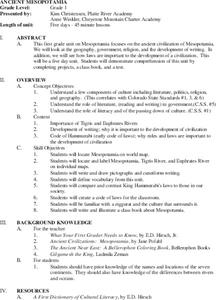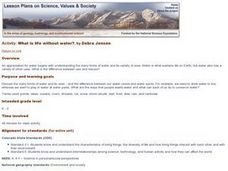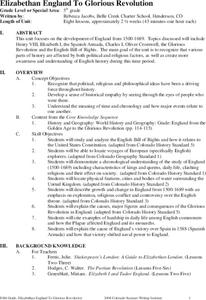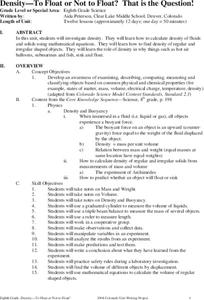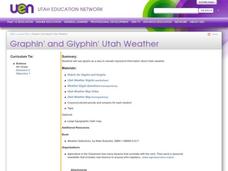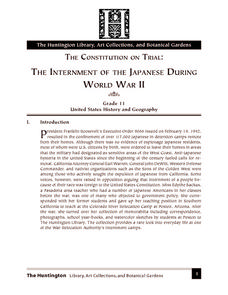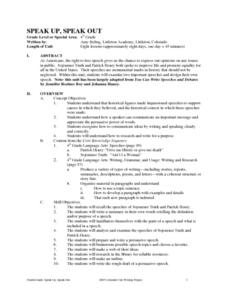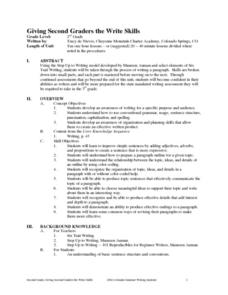Curated OER
GODS OF THUNDER: Myths and Mythical Characters
Students explore the myths and legends of the Ancient Greek and Romans in the ten lessons of this unit. Students compare and contrast the myths and the cultures that created them. Norse myths are included in this unit.
Curated OER
Ancient Mesopotamia
Students locate ancient Mesopotamia on a map. They examine the religion, government and the development of writing. They write and draw pictographs and cuneiform writing. They create a class book based on their investigations.
Curated OER
Physical Characteristics of the Troposphere
Students examine troposphere graphs and mcompare their hypotheses with data collected by weather balloons launched from the NOAA ship, Ronald H. Brown. they write summaries about the physical properties of the troposphere.
Curated OER
Scientific Literacy - Lightning
Students investigate how radar can be used to determine the lightning potential of a cloud. Several readings are provided about the research conducted by Dr. Rob Cifelli. The scientific material is summarized in this lesson.
Curated OER
What is Life Without Water?
Pupils differentiate between how they use water in response to a need and how they use water for pleasure. They read books about water, participate in class discussion and illustrate their observations.
Curated OER
Water Cycle Column
Students use common materials to construct a working model of the water cycle. They then observe and explain evaporation, condensation, precipitation and percolation as aspects of a continuing cycle. Students also complete worksheets and...
Curated OER
Endangered Species Furniture Project
Students work in groups to research an endangered species. They then refinish and paint a piece of furniture and incorporate facts and references about the animal they have researched.
Curated OER
Historical Success Stories: Banneker, Blackwell, Drew, and Faraday
Fourth graders investigate how all races and religions have contributed to US history by looking at the scientists Elizabeth Blackwell, Benjamin Banneker, Charles Drew, and Michael Faraday. They research these scientists individually and...
Curated OER
Elizabethan England To Glorious Revolution
Students explore the development of England from 1500 to 1689 in this eight lessons unit. The various parts of history affected by both political and religious factors are synthesized in this unit.
Curated OER
Let Freedom Sing: A Patriotic Program for Grades 1 - 6
Students explore the history, meaningful background, and significance of Patriotic songs in the eight lessons of this unit. Each of the different grade levels experience a different amount of lessons all culminating in a Patriotic Program.
Curated OER
Everything in Its Place: Science Classification
Students investigate the system of classification for living things through the sixteen lessons of this unit. The five kingdoms of monerans, protists, fungi, plants, and animals form the basis of several experiments as the similarities...
Curated OER
Strong as the Weakest Link
Students discover the types of stress that materials undergo. They examine how bridges and skyscrapers are built to withhold the tension. They create their own structure out of marshmallows and spaghetti.
Curated OER
Testing the Caverns
Students build model caverns using paper mache or clay and bury them in a tray of sand. They test the models by dropping balls onto them to simulate an asteroid hitting the earth. They evaluate the effectiveness of a structure against...
Curated OER
Using Logos and Mission Statements to Communicate Sustainable Forestry Information
Young scholars survey forestry foundations to see how they represent important information into their logos and mission statements. In this forestry lesson plan, students use the information to better understand visual representations...
Curated OER
Density - To Float or Not to Float? That is the Question!
Students investigate how to find the density of fluids and solids using math. Students also learn how to find the density of regular and irregular shaped objects.
Curated OER
Graphin' and Glyphin' Utah Weather
Fourth graders use glyphs as a way to visually represent information about Utah weather. These nonverbal representations help students collect and interpret data in a visual format.
Curated OER
The Constitution on Trial: The Internment of the Japanese During World War II
Eleventh graders analyze primary source documents during the Second World War. Students recall statements of Japanese-Americans who were placed into internment camps during the war.
Curated OER
African Americans in World War I - Lesson Two
Students explore the decision to allow African Americans enlist in the military. In teams of three to four, students debate allowing Muslim Americans to enlist in the war. Students not participating in the debate serve as legislatures....
Curated OER
Triumphant Spirit
Learners watch a video which allows them to listen to a woman tell her tale as a young girl in Germany. Upon viewing this video and completing the reading assignment, students write about a person with a triumphant spirit.
Curated OER
A Trip Back in Time
Second graders, through the following 10 lessons, develop an understanding of what life was like in Ancient Greece.
Curated OER
Speak Up, Speak Out
Fourth graders examine, compare, and summarize the speeches of Sojourner Truth and Patrick Henry. They review the parts of a good speech and design and give their own speech that expresses an opinion and persuades the listener..
Curated OER
Levers and Pulleys and Gears, Oh My!
Students explore the difference between compound and simple machines in this six lessons of this unit. The purpose and importance of a variety of types of simple machines and the effects of friction are investigated.
Curated OER
Giving Second Graders the Write Skills
Second graders analyze the steps taken in writing a paragraph in the ten lessons of this unit. Writing for a particular purpose is developed as the conventional grammar skills utilized.
Curated OER
Masks from Around the World
Students examine the history of masks, and create their own mask as a culminating activity. They view and discuss a PowerPoint presentation about the history of masks, complete a class KWL chart, create their own mask, and write a...

